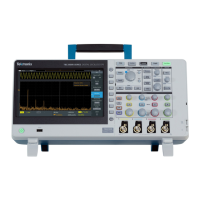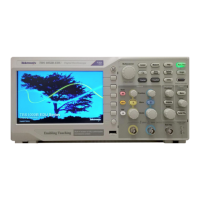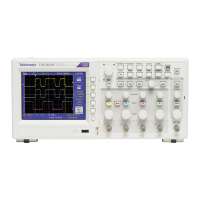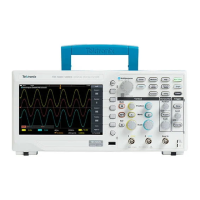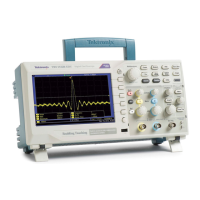Arguments
<NR3> argument is the floating point value of the position, in XUNits, of the
first sample in the incoming waveform. If XUNits is "s", <NR3> is the time of
the first sample in the incoming waveform.
Examples
WFMINPRE:XZERO 5.7E-6 indicates the trigger occurred 5.7 μs before the first
sample in the waveform.
WFMINPRE:XZERO? might return :WFMINPRE:XZEro -7.5000E-6 indicating
that the trigger occurs 7.5 μs after the first sample in the waveform.
WFMInpre:YMUlt
Sets or queries the vertical scale factor of the incoming waveform, expressed in
YUNits per waveform data point level. For one byte waveform data, there are
256 data point levels. For two byte waveform data there are 65,536 data point
levels. YMUlt, YOFf, and YZEro are used to convert waveform record values to
YUNit values using the following formula (where dl is the data level;
curve_in_dl is a data point in CURVe): value_in_units = ((curve_in_dl -
YOFf_in_dl) * YMUlt) + YZEro_in_units.
Group
Waveform
Syntax
WFMInpre:YMUlt <NR3>
WFMInpre:YMUlt?
Related commands
DATa:DESTination on page 90, WFMInpre:BYT_Nr on page 250, WFMInpre:
YUNit on page 255
Arguments
<NR3> is the vertical scale factor per digitizing level of the incoming waveform
points.
Examples
WFMINPRE:YMULT? might return :WFMINPRE:YMULT 40.0000E-3, which
(if YUNit is "V") indicates that the vertical scale is 40 mV/digitizing level (1V/
div for 8-bit data).
W commands
254 TBS2000 Series Programmer

